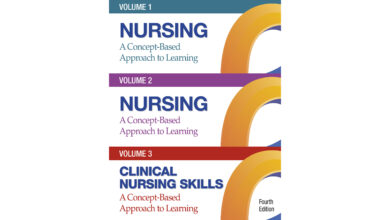Generative AI in Media and Entertainment Market to Hit US$4 Bn by 2028

Generative AI in Media and Entertainment Market Prediction: The Data Center Rack market size is expected to reach US$4.86 billion by 2028 from US$1.49 billion in 2023, with a CAGR of 26.65%. Generative AI is revolutionizing the way we create, distribute, and monetize content in the media and entertainment industry.
As companies and organizations introduce cutting-edge tools and solutions powered by artificial intelligence (AI), the industry is in for a wild ride. In this article, we look at what’s happening and the strategic partnerships that will shape the future of generic AI in media. We’ll also look at how these technologies will revolutionize audience engagement, improve operational efficiency, and generate revenue.
Factors driving the Data Center Rack market growth
Gen AI-powered chatbots and Gen AI-powered virtual assistants are changing the way customers interact with media and entertainment brands. AI-powered chatbots are able to understand and process natural language, enabling them to engage with users in a human-like manner. This improvement in interaction allows for more efficient resolution of customer queries, personalized recommendations and 24/7 support.
GenAI is also responding to the increasing need for multilingual content across the media. AI-powered language models enable AI-powered content creation and translation across multiple languages, making content more accessible to a broader audience. This enables media companies to reach new markets and reach diverse linguistic audiences.
Content moderation is one of the most important aspects of online platform management. Generative AI is revolutionizing content moderation by automating the process of flagging inappropriate, harmful or offensive content. AI systems are trained to identify and flag content based on real-time analysis of text, images and videos. This automation eliminates the need for human moderators who often find it difficult and emotionally draining to manually review large amounts of content.
Generative AI is changing the way advertising and marketing works. AI can create highly personalised and targeted campaigns by analyzing billions of pieces of user data, such as browsing habits, user preferences, and purchase histories.
Today’s consumers demand personalized and one-of-a-kind content experiences. Generative AI is equipped to deliver these experiences. By analyzing user behavior, viewing patterns, and other data, AI can create media content that is tailored to the individual’s preferences. This can include personalized video recommendations, personalized news feeds, bespoke music tracks, or even bespoke art pieces.
Generative AI is revolutionizing the way we experience live events and live performances. AI-generated digital avatars create realistic, immersive virtual experiences that enhance audience engagement. These avatars can work with human artists or perform on their own, allowing for remote performances that go beyond the physical boundaries of a country or region. AI-generated virtual avatars can create interactive experiences and create entirely new types of entertainment.
Market restraints that may hinder the growth
Ethical considerations surrounding Generative AI in media and entertainment are paramount due to the potential for misuse, including the creation of deepfakes, copyright infringement, and the spread of misinformation. Addressing these concerns requires robust mechanisms to ensure content authenticity, mitigate bias, and enhance transparency in AI-generated content.
The scarcity of skilled professionals proficient in Generative AI poses a significant challenge for the media and entertainment industry. Upskilling the workforce and closing the talent gap are essential steps to fully harness the capabilities of Generative AI technologies, enabling companies to innovate and remain competitive in the rapidly evolving landscape.
High initial investment costs act as a barrier for many media companies looking to adopt Generative AI solutions. The substantial upfront investments required in hardware, software, and infrastructure necessitate careful planning to ensure a favorable return on investment and justify the adoption of these technologies.
Verifying the authenticity of Generative AI-generated content presents a complex challenge for the media and entertainment industry. Developing robust content authentication mechanisms is crucial to maintain trust and credibility, safeguarding against the proliferation of false or misleading information in the digital ecosystem.
The integration of Generative AI in media and entertainment also raises concerns regarding data privacy. The collection and processing of user data for AI-driven content creation require stringent compliance with data protection regulations and proactive measures to address consumer privacy concerns, safeguarding individuals’ personal information and upholding ethical standards.
Recent Developments in the Data Center Rack Market
SymphonyAI unveiled its AI-powered Media Copilot at the NAB Show in Las Vegas, enhancing content performance analysis across platforms and revenue models. Integrated with Microsoft Azure OpenAI Service, the Media Copilot leverages predictive and generative AI to provide rapid, actionable insights through a natural language interface. This tool addresses data fragmentation and analysis challenges faced by media executives, facilitating better revenue forecasting, content performance evaluation, and licensing opportunities. The launch highlights SymphonyAI’s commitment to advancing AI capabilities in the media sector, aiming to improve decision-making and monetization strategies.
Meta is developing AI-powered tools for advertisers, marking its first generative AI product. The new AI Sandbox allows advertisers to test features like text variation, image cropping, and background generation. Initially available to a small group, these tools will expand to more advertisers this summer and integrate into Meta’s ad products later this year. This initiative follows Meta’s development of generative AI models like ImageBind and the large language model LlaMA. Additionally, Meta is enhancing its Advantage+ platform to optimize ad campaigns with AI, enabling broader audience targeting and incorporating AI-generated videos in catalog ads.
Notable Partnerships in the Data Center Rack Market
The collaboration between NVIDIA and WPP to develop a content engine leveraging Generative AI marks a significant advancement in the media and entertainment sector. This merger reflects a strategic move towards integrating cutting-edge AI technologies with creative content production, offering clients unparalleled capabilities to produce personalized and immersive brand experiences at scale. By combining NVIDIA’s Omniverse™ platform and AI expertise with WPP’s industry leadership and creative prowess, the merger aims to reshape the landscape of brand advertising and consumer engagement.
This strategic alliance positions WPP as a frontrunner in harnessing Generative AI for commercial content creation, promising to revolutionize how brands interact with consumers through highly tailored and visually compelling content experiences. Through this merger, WPP’s clients gain exclusive access to a transformative AI solution, elevating their brand storytelling and engagement strategies to new heights in the evolving media and entertainment market.
Conclusion
The integration of generative AI into the media and entertainment sector is revolutionizing the way content is produced and consumed. From personalized advertising solutions by Meta to Hitachi’s enterprise AI collaborations, the market is seeing a surge in innovative applications that promise to enhance efficiency and profitability.
As AI technology continues to evolve, its impact on the media landscape will grow, offering new opportunities for creative expression and business growth. Companies that embrace these advancements will be well-positioned to lead in an increasingly competitive and dynamic industry. The future of generative AI in media and entertainment market lies in the seamless blend of human creativity and AI-driven insights, heralding a new era of digital transformation.
FAQs
What is generative AI in the media industry?
Generative AI is a type of artificial intelligence that can produce realistic and original content, such as text, images, audio, and video, from scratch in the media and entertainment industry.
How to use AI in entertainment?
AI can be used in entertainment to enhance content creation, personalization, and distribution. Specific applications include AI-powered recommendation systems, predictive analytics for content success, AI-generated music and art, interactive gaming experiences, and AI-assisted special effects in movies.
Which industry is likely to benefit the most from generative AI?
The banking, high-tech, and life sciences industries are expected to benefit the most from generative AI.
How is AI changing the media?
AI is transforming the media industry by enhancing content creation, personalization, and distribution. It is being used to automate tasks such as transcription, summarization, and content recommendation, freeing up human journalists to focus on more complex and creative work.
How is AI taking over social media?
AI is transforming social media by enhancing content creation, personalization, and distribution. It is being used for tasks such as automated content moderation, tailored content recommendations, and targeted advertising, making social media more efficient and engaging for users and businesses.



